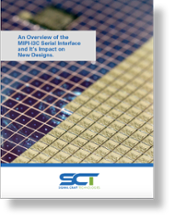Low-Power Wide-Area Networks 101
Low-power wide-area networks (LPWAN) are playing a crucial role in the growth of the Internet of Things (IoT). These wireless networks are one of the primary backbones used in IoT deployments as they provide a cost-effective way to connect a large number of remote devices spread over vast areas, all while using power so efficiently that batteries can last years or decades. In this technical paper, we will discuss some of the key characteristics of various LPWAN options, including a comparison of energy efficiency, capacity, coverage, cost and security.
Intrinsically Safe Power Supply Design: A Step-by-Step Guide
Special considerations and design practices need to be kept in mind when developing products for use in Hazardous (Explosive) Environments. One protection method that can be used is known in the industry as ‘Intrisically Safe Design’. This white paper can help designers gain insight into this method by demonstrating some best practices and presenting the reader with a custom power supply example.
Overcoming the Top 5 Challenges of Harmonic Measurements
Electromagnetic regulations require verification of emissions compliance of all wireless products. Current wireless technology has pushed the limits of semiconductor capabilities to the point where there is little margin between typical emissions and regulatory limits. To guarantee compliance, it is often essential to measure emissions on a unit-by-unit basis in production. This white paper details several of the key challenges involved and presents a newly available, cost-effective approach to harmonic measurement.
A System Architect's Guide to the MIPI-RFFE Bus and Its Capabilities
Emerging radio technologies such as 5G cellular and 802.11ax have pushed download speeds into the Gigabit-per-second range and latencies in single-digit milliseconds. It is not uncommon to find products incorporating these, and several other, highly complex radios into a single package. For system engineers, overcoming packaging constraints while maintaining radio radio performance is becoming increasingly difficult. To help address some of these difficulties, the MIPI RF Front-End (RFFE) specification was introduced to provide a highly efficient but flexible control interface for these systems.
Introduction to the CPRI Specification and the 5G Evolution to eCPRI
Every generation of mobile network brings about new technology and infrastructure improvements to support faster data rates, greater bandwidth, and improved efficiency and coverage. To keep up with these advancements, base station architectures have steadily evolved over time. The introduction of fourth generation cellular (4G) required major changes in the traditional analog radio architecture, such as the migration of all analog circuitry to the remote radio unit (RRU).
An Overview of the MIPI-I3C Serial Interface and It’s Impact on New Designs
In recent years, the electronics industry has experienced an explosion in the growth of embedded sensors being used in high-volume applications such as smartphones, wearables, automobiles, and the Internet of Things (IoT). This rapid growth is fueled by the development of a wide variety of small-sized, low-cost sensors being married to an ever-expanding array of innovative consumer applications. An excellent example is today’s typical smartphone, which incorporates 10 or more sensors measuring anything from light and biometric response to motion and environmental conditions. To address these market needs, the MIPI I3C Standard was developed specifically to address connectivity between sensors and a host processor in mobile, wearable, and IoT applications.






